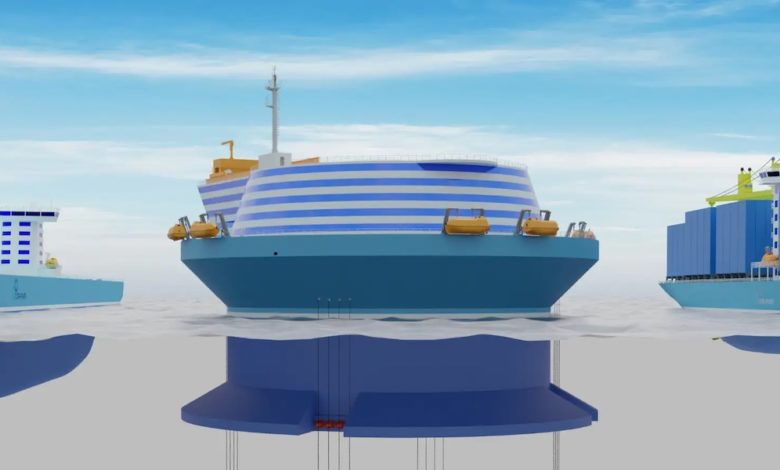CORE POWER and MIT secure funding for floating nuclear research project

The US Department of Energy’s Nuclear Energy University Program (NEUP) has granted research funds to the MIT Energy Initiative, CORE POWER, and the Idaho National Laboratory for a three-year study into the development of offshore floating nuclear power generation in the US.
The NEUP funding will allow detailed collaborative research into the economic and environmental benefits of floating advanced nuclear power generation and take a granular look at all aspects of building, operating, maintaining, and decommissioning such facilities.
“It is an important step forward for CORE POWER to be working with the world-renowned MIT Energy Initiative. We believe this will help us take the next step in bringing groundbreaking new nuclear technology to the maritime market,” said Mikal Bøe, chairman and CEO of UK-based CORE POWER.
The US Department of Energy (DOE) earlier announced its intention to fund and develop regional clean hydrogen hubs (H2Hubs) across America, one of which must be powered by nuclear. Funding would come from the $1.2trn Bipartisan Infrastructure Law.
“This NEUP project will among other things look at how a nuclear-powered H2Hub off the coast of the US could set the scene and demonstrate how we make hydrogen production, safe, cheap and reliable by placing the production unit offshore,” Bøe said.
The nuclear option is lighter and more compact than conventional marine diesel set-ups
There is a great deal going on in the US nuclear maritime space at the moment. Earlier this month the DOE awarded class society ABS a contract to research barriers to the adoption of advanced nuclear propulsion on commercial vessels.
The $800,000 research project will address challenges to adopting new reactor technology in commercial maritime applications at a time where a host of companies around the world are looking to commercialise atomic propulsion.
A report issued in March from CORE POWER urged the US to take the lead when it comes to adopting nuclear propulsion for the merchant fleet.
The US has a long record of using nuclear power in its navy with an exemplary safety record. This has led to increased interest in the use of nuclear power for civilian vessels, particularly from US special presidential envoy for climate John Kerry.
Tony Huston, US country head at CORE POWER, commented: “The transport of goods on the US coasts, Great Lakes and internal waterways offers strong proof of concept for nuclear powered decarbonisation without the complex regulatory hurdles of moving reactors between nation states.”
The British company argued that the deployment of commercial nuclear vessels would offer an entirely new career path for seafarers once they leave the navy. STEM qualified students from the US college system could also be recruited.
“The US would be in a prime position to become an exporter of transformative advanced nuclear technology for the maritime sector to trusted partner nations like the UK, allowing the US to create a valuable export market for technology built by highly skilled American workers. By embracing the possibilities of advanced nuclear shipping, the US now can reinvigorate its shipbuilding and maritime sector putting itself at the forefront of one of the world’s most important industries,” Huston said.
CORE POWER, together with Bill Gates-chaired TerraPower, Southern Company and French atomic group Orano, is developing a modular molten salt reactor to propel ships and provide reliable energy for manufacturing synthetic green fuels from hydrogen. The first prototype reactor is due to start trials in 2025.
CORE POWER now has the backing and investment from a host of owners who, combined, control more than 2,000 ocean-going vessels.
New research by C-Job Naval Architects shared today shows the potential for nuclear energy at sea. According to the independent ship design company, molten salt reactors have the most potential in the long term. The combination of passive safety, high burn-up, and the future potential to use the thorium cycle make it the best fit for maritime application.
The research identified large ocean-going vessels as having the most potential for nuclear propulsion. By creating four different concepts covering bulk, container, tanker, and offshore, key items were analysed, including the mass and volume of the energy storage and power generation system. The study shows that, even though the shield around the reactor is a significant portion of the respective mass and volume of the nuclear power generation system, in most cases, the nuclear option is lighter and more compact than conventional marine diesel set-ups.
While nuclear marine propulsion has a high capital expenditure, the research claims it to be cost-effective within five to 15 years depending on fuel cost and the vessel’s operational profile.
